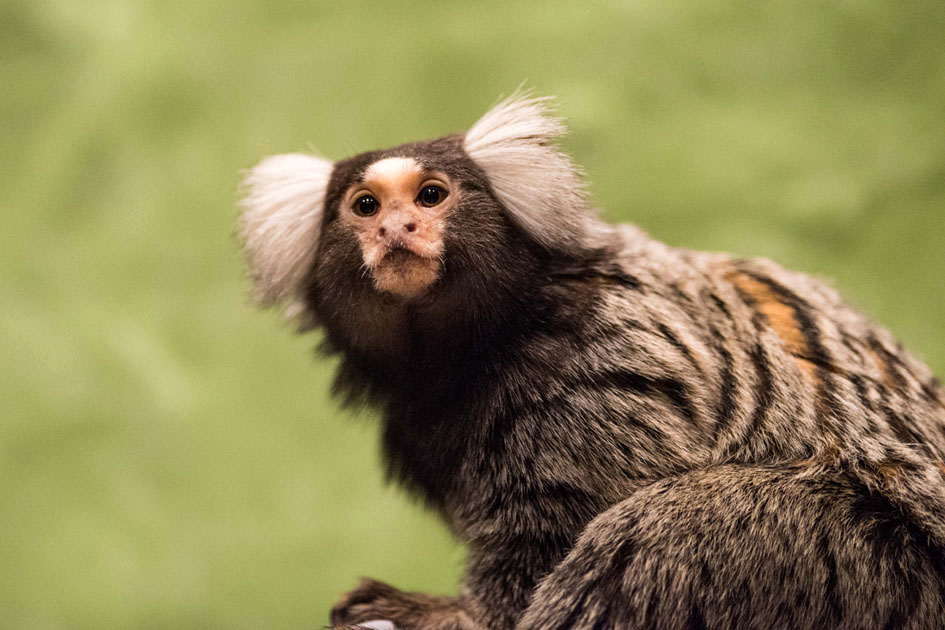Aktuelles
22.08.2019
Marmosets’ voices do as they are told
Tübingen researchers investigate the deliberate production of different call types as the foundation of the evolution of human speech
Marmosets are very sociable monkeys and communicate frequently via vocalizations. Now a research team led by Dr. Steffen Hage of the Werner Reichardt Center for Integrative Neuroscience has trained marmosets to use their voices intentionally. In the laboratory, the marmosets learned to use their calls as a response to a colored visual stimulus. “That’s not a simple task like stretching out an arm. Rather, the use of the vocal apparatus requires the coordinated interaction of several muscle groups,” Steffen Hage explains. In the experiments, the marmosets fulfilled the task with various call types such as tsik, chirp, and phee calls. The researchers say this shows that the animals can use their vocalizations independently of the underlying emotions they are normally associated with, and can therefore instrumentalize them to perform a specific task successfully.
Marmosets have been studied in detail because their brain anatomy and physiology are similar to that of humans. The fact that they can be trained for such complex motor behaviors under laboratory conditions now opens up further possibilities for using the animals as a model system to investigate neural networks underlying preadaptations of human speech and how they are affected in neurodegenerative and neuropsychiatric diseases.
“Using the vocal apparatus with intention was an important requirement for the evolution of human speech,” says Hage. “Marmosets would therefore be suitable for studying the early adaptations that were necessary for the development of human speech.”
Marmosets are New World monkeys – they live in the Brazilian rainforests. “In earlier studies, we showed that the Rhesus monkey, an Old World monkey species, can similarly control its vocalizations and produce goal-directed calls on command,” says Hage. From an evolutionary perspective, it seems that the origin of the deliberate control of the voice is much older than previously believed. “This ability was probably present in the last common ancestor of the Old and New World monkeys which lived more than 35 million years ago.”
Janna Eberhardt
Public Relations Department
Publication:
Pomberger T, Risueno-Segovia C, Gultekin YB, Dohmen D, Hage SR (2019) Cognitive control of complex motor behavior in marmoset monkeys. Nature Communications 10:3796, DOI 10.1038/s41467-019-11714-8; rdcu.be/bPgTF

